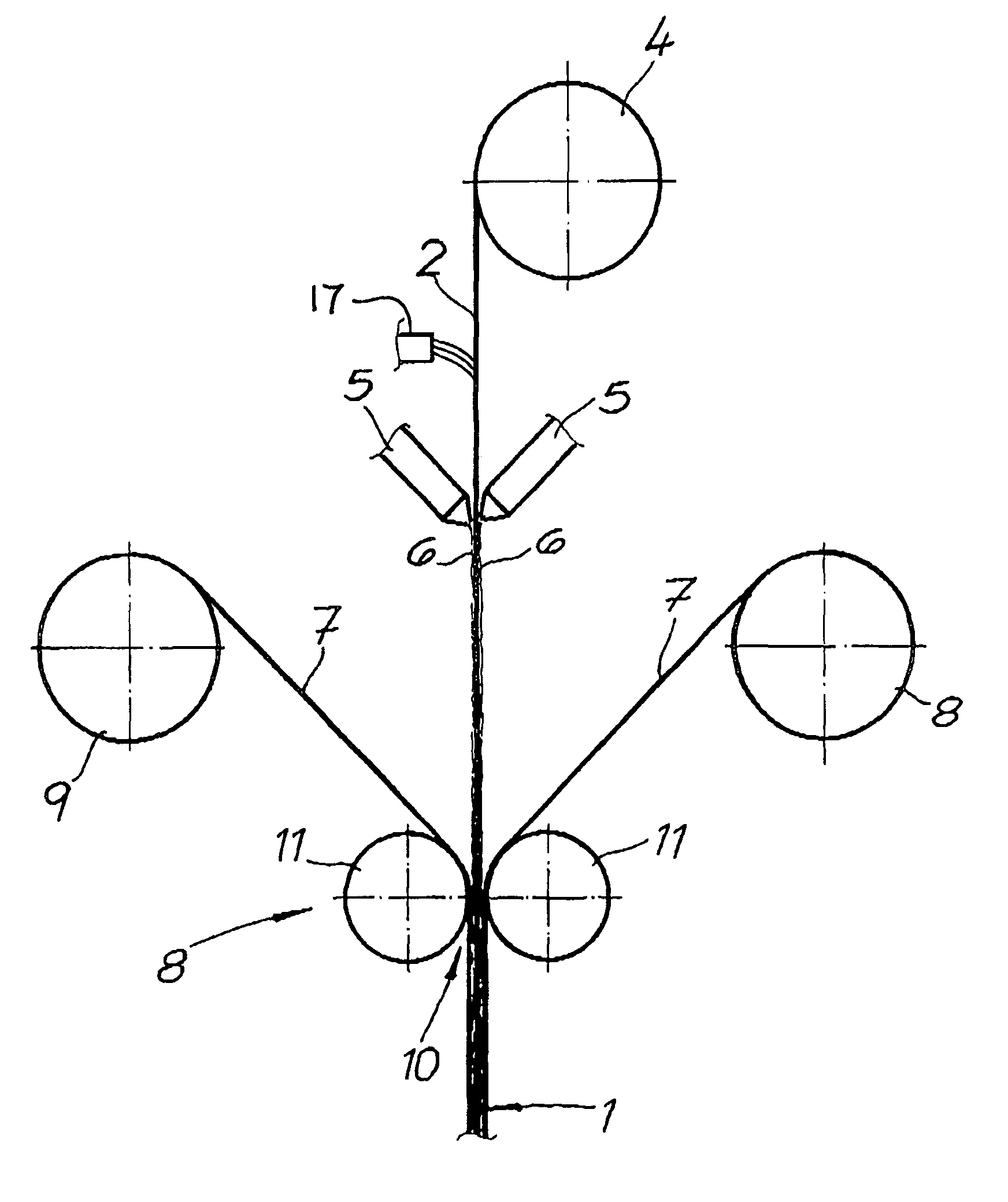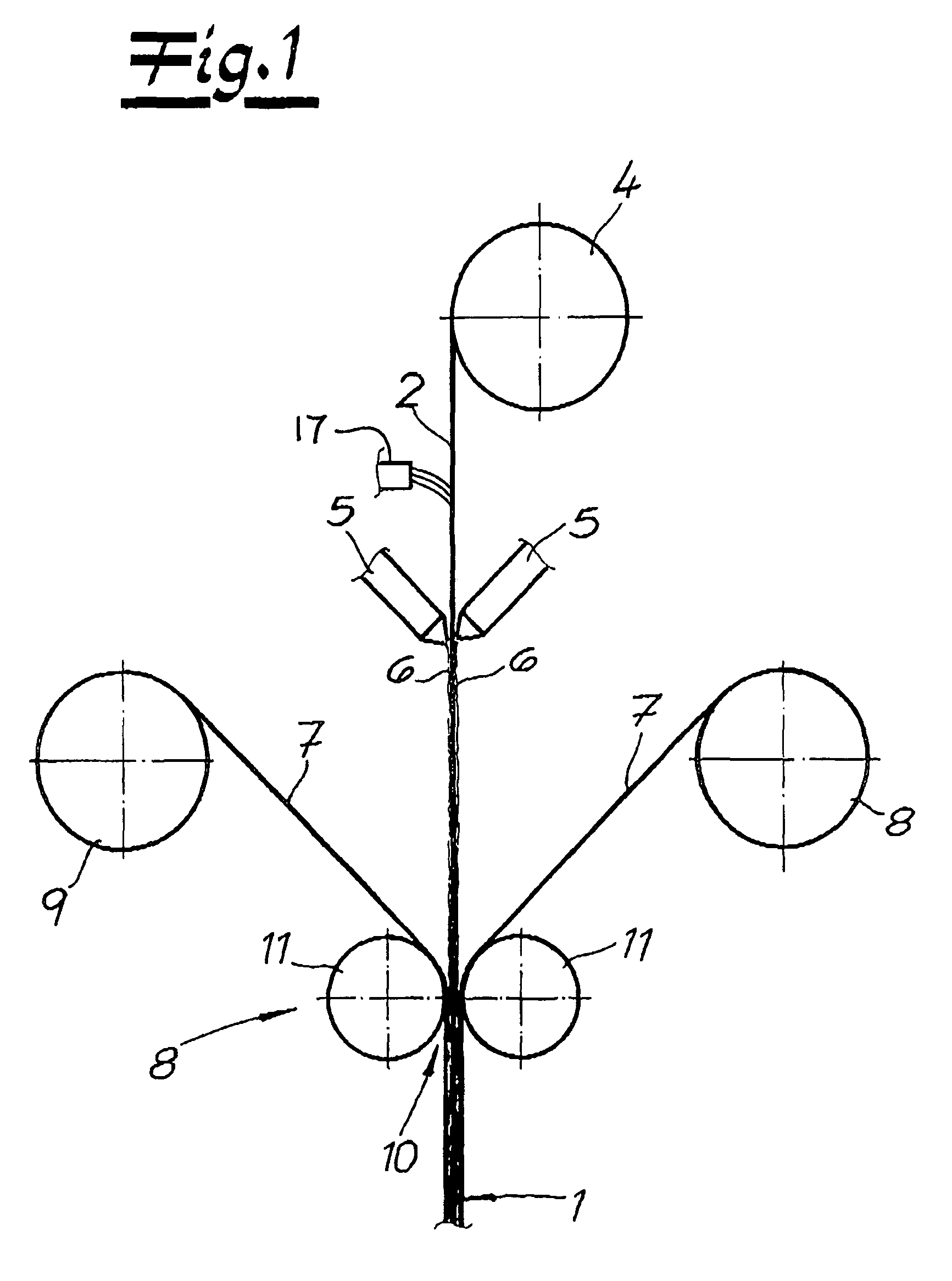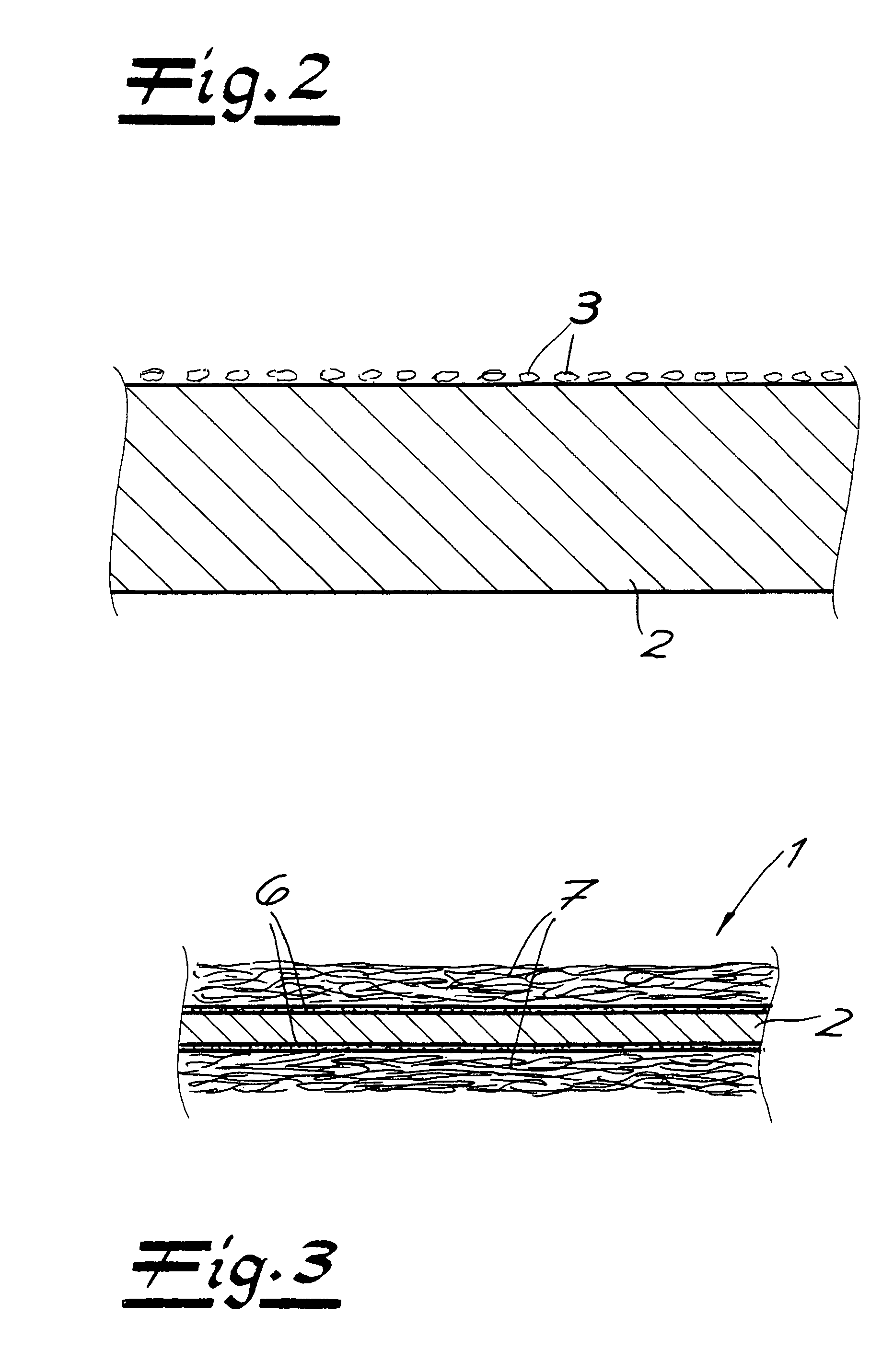Method for the production of an elastic laminate material web
a technology of elastic laminate and web, which is applied in the direction of synthetic resin layered products, bandages, other domestic articles, etc., can solve the problems of increasing production costs and achieve the effect of high laminate strength
- Summary
- Abstract
- Description
- Claims
- Application Information
AI Technical Summary
Benefits of technology
Problems solved by technology
Method used
Image
Examples
example 1
[0024]A carrier film 2 of SEBS is produced at a thickness of 50 μm, using a flat-film extrusion method. After extrusion, a polymer powder 3 of low-density polyethylene (LDPE) is applied to the carrier film 2 (as shown in FIG. 4) at an average weight per area unit of 1.5 g / m2. Afterwards, that part of the powder 3 that does not adhere to the carrier film 2 is blown or brushed off from the latter, thereby reduding the weight per area unit of powder 3 on carrier film 2 to approximately 0.7 g / m2. Carrier film 2 is wound up and can easily be stored and transported before further processing. During further processing, carrier film 2 is rolled off film roll 4 and provided with an SBS hot-melt glue on both sides. The SBS hot-melt glue is applied to both sides of carrier film 2 at a weight per unit area of 10 g / m2, in each instance, at a temperature of 140° C. The powder 3 of LDPE melts at the gluing temperature and distributes itself in the SBS hot-melt glue. Subsequently, a fiber non-woven...
example 2
[0025]A mono-film of SEBS is produced at a thickness of 70 μm, using a flat-film extrusion method. A powder 3 of EVA is sprinkled onto the extruded carrier film 2 at a weight per unit area of 0.8 g / m2, and the latter is rolled up. The film roll 4 can be transported and stored before further processing. For further processing, carrier film 2 is rolled off film roll 4. After carrier film 2 has been rolled off, part of the powder is removed from carrier film 2 by means of a brushing process, before an SIS hot-melt glue having a melt temperature of 170° C. is applied to the carrier film on both sides, as a melted, viscous fluid. At the gluing temperature, the EVA powder melts and distributes itself in hot-melt glue 6, which is applied to both sides of the carrier film 2 at a weight per unit area of 15 g / m2, in each instance. Subsequently, a fiber non-woven fabric having a weight per unit area of 35 g / m2 is laminated onto both sides of carrier film 2 as cover material 7.
PUM
| Property | Measurement | Unit |
|---|---|---|
| thickness | aaaaa | aaaaa |
| thickness | aaaaa | aaaaa |
| temperatures | aaaaa | aaaaa |
Abstract
Description
Claims
Application Information
 Login to View More
Login to View More - R&D
- Intellectual Property
- Life Sciences
- Materials
- Tech Scout
- Unparalleled Data Quality
- Higher Quality Content
- 60% Fewer Hallucinations
Browse by: Latest US Patents, China's latest patents, Technical Efficacy Thesaurus, Application Domain, Technology Topic, Popular Technical Reports.
© 2025 PatSnap. All rights reserved.Legal|Privacy policy|Modern Slavery Act Transparency Statement|Sitemap|About US| Contact US: help@patsnap.com



